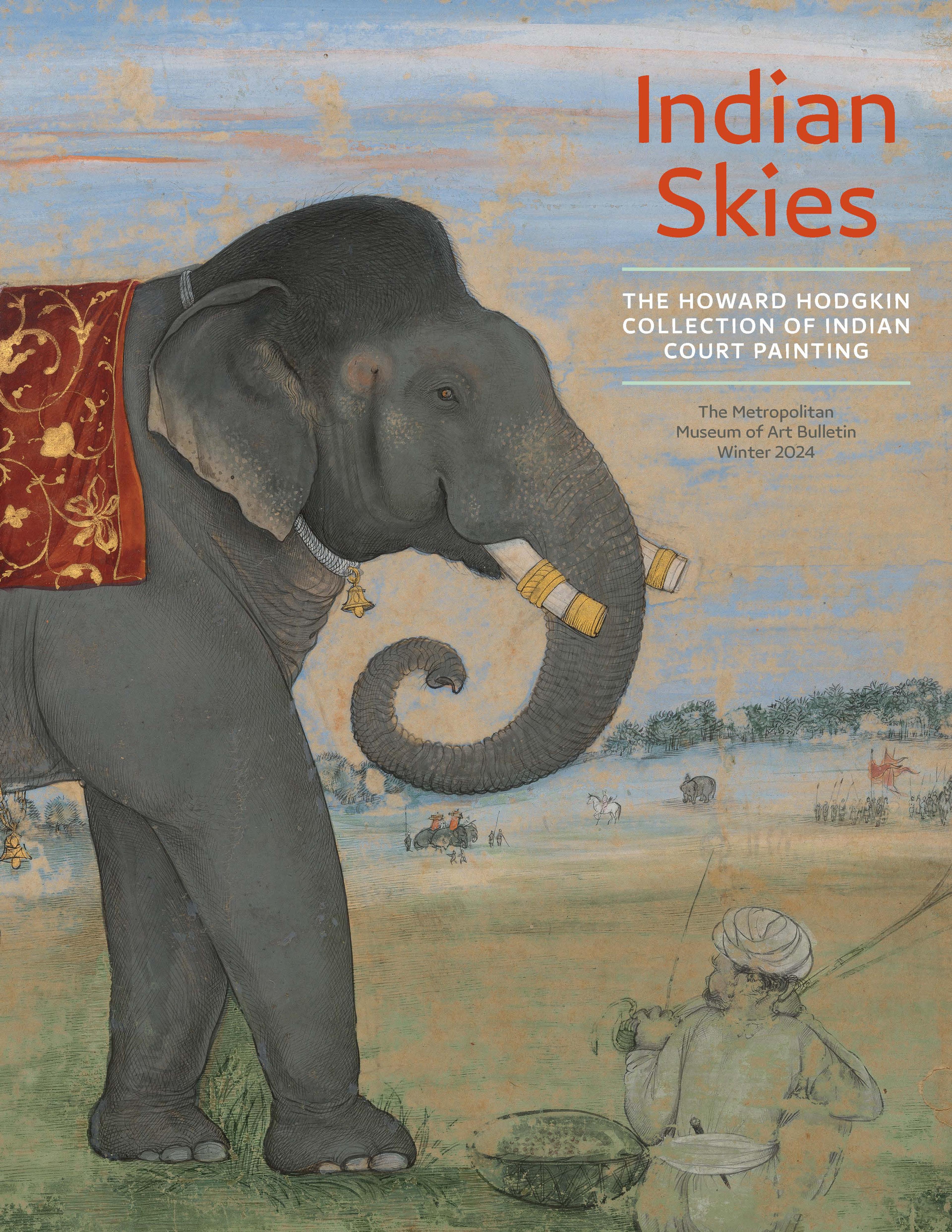Album Page with Découpé Calligraphy
This calligraphic folio, comprised of découpé letters, floral motifs, and sinuous arabesques, is a masterful creation of two artists who have signed their work: Ali, the calligrapher and Muhammad Hasan, the paper cutter. The calligraphy reveals a saying attributed to ‘Ali ibn Abi Talib (the cousin and son-in-law of the Prophet Muhammad) upon freeing his slave Qanbar, which became a well-known Shi’ite phrase. Here the letters are interwoven with a simple but strong S-shaped arabesque scroll bearing blossoms.
Artwork Details
- Title: Album Page with Découpé Calligraphy
- Date: 1630–40
- Geography: Attributed to India, probably Bijapur. Country of Origin India
- Medium: Gouache on black paper with colored and white decoupage
- Dimensions: Frame: 18 1/8 × 13 11/16 × 7/8 in. (46.1 × 34.7 × 2.2 cm)
Image: 16 3/4 × 12 5/8 in. (42.5 × 32 cm)
Sheet: 12 3/8 × 7 7/8 in. (31.5 × 20 cm) - Classification: Codices
- Credit Line: Howard Hodgkin Collection, Purchase, Florence and Herbert Irving Acquisitions, Harris Brisbane Dick, and 2020 Benefit Funds; Howard S. and Nancy Marks, Lila Acheson Wallace, and Friends of Islamic Art Gifts; Louis V. Bell, Harris Brisbane Dick, Fletcher, and Rogers Funds and Joseph Pulitzer Bequest; and funds from various donors, 2022
- Object Number: 2022.203
- Curatorial Department: Islamic Art
More Artwork
Research Resources
The Met provides unparalleled resources for research and welcomes an international community of students and scholars. The Met's Open Access API is where creators and researchers can connect to the The Met collection. Open Access data and public domain images are available for unrestricted commercial and noncommercial use without permission or fee.
To request images under copyright and other restrictions, please use this Image Request form.
Feedback
We continue to research and examine historical and cultural context for objects in The Met collection. If you have comments or questions about this object record, please contact us using the form below. The Museum looks forward to receiving your comments.
